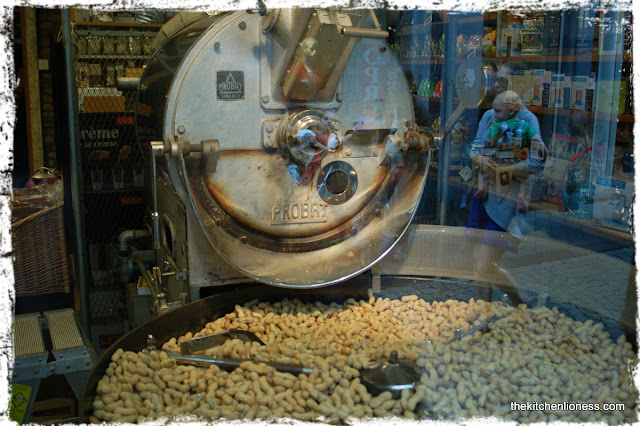Different recipes for Spätzle (a type of egg noodle of soft texture) can be found in the cuisines of Germany, Austria, Switzerland, Hungary, Alsace and South Tyrol. In Germany, Spätzle are largely considered a "Swabian speciality" and are generally associated with the German states of Baden-Wuerttemberg (“Baden-Württemberg”) and Bavaria (“Bayern”). The word “Spätzle” is the Swabian diminutive of “Spatz”, literally meaning "little sparrow”.
Basic Spätzle dough typically consists of very few ingredients namely, eggs, flour, and salt. Sometimes water or milk is added to produce a thinner dough. Traditionally, the Spätzle are made by scraping dough off a wooden chopping board ("Spätzlebrett") into boiling salted water where they are cooked until they rise to the surface. They are then skimmed and kept warm. Since this traditional method requires quite some practice, a number of different devices were invented to facilitate the Spätzle making process. Some resemble a strainer/colander, or a potato ricer ("Spätzlepresse"), a food mill or a coarse grater ("Spätzlehobel"). Whichever method you choose, all of these devices still require you to drop the dough into steaming hot water.
Herbed Spätzle – „Kräuterspätzle“
Ingredients
(serves two – double or triple if you please)
2 tbsp fresh Italian parsley
2 tbsp chives
1 tbsp fresh thyme
200 grams AP flour
some fine sea salt
4 eggs (L)
100 ml olive oil
80 grams of freshly grated parmigiano reggiano
60ml homemade chicken stock (or store bought low-salt chicken broth)
2 tbsp unsalted butter
some freshly ground black pepper
Special Equipment
A spätzle maker (“Spätzlehobel”), a potato ricer, a food mill or a colander with 1/4 inch holes
Preparation
1. Wash the herbs, dry well and put half of the parsley aside.
2. Chop the remaining herbs finely.
3. In large bowl combine the flour, chopped herbs and a pinch of salt.
4. With a wooden spoon stir the eggs into the dry ingredients and continue stirring until the batter becomes homogenous.
5. Cover the dough with saran wrap and let it rest for about thirthy minutes at room temperature.
6. Heat the olive ol in a pan and briefly fry the remaining parsley. Let it drain on paper towels and set aside.
7. After the batter had time to rest, bring a large pot of lightly salted water to boil. Reduce heat to medium. Place rimmed baking sheet close by.
8. Working with 1/2 cup batter at a time and using flexible rubber spatula, press spaetzle batter through 1/4-inch-wide holes of spaetzle maker or colander.
9. Boil until the spaetzle rise to the surface. Using skimmer, lift the spaetzle from the pot. Drain and place on a baking sheet.
10. Continue until there is no more batter left.
12. In a large skillet bring the stock to a simmer over medium-high heat and stir in the ice-cold and cubed butter until the sauce starts to thicken.
11. Add the parmigiano and the spaetzle and stir gently until heated through.
12. Season with some freshly ground pepper and serve adding a few fried parsley leaves as a finishing touch.
You can serve the Herbed Spätzle on their own, with a mixed salad or alongside sausages, chicken or some pork schnitzel. For the pork schnitzel I use pork tenderloin cut into medallions, dusted with flower and coated with eggs mixed with Dijon mustard and homemade bread crumbs. I fry the schnitzel in some oil and serve them with lemon wedges and some Dijon mustard.
Spätzle are always a big hit at our house, whether I make the herbed version, the regular version, with some swiss cheese and spinach or lightly fried in butter. Just make sure to rinse off your cooking utensils immediately after cooking. First rinse with cold than with warm water, otherwise the remains of the batter “will turn into cement” as one of my favorite cooks once said.
And for dessert why don´t you try baking your favorite Marble Cake recipe in a Weck jar…
…and do not forget to drizzle some chocolate over the finished cake. Baking in Weck jars of different sizes works very well and is a lot of fun.The cake always stays moist and has a nice rustic look, just the right dessert for a spaetzle and schnitzel dinner!
Guten Appetit! - Enjoy!











































